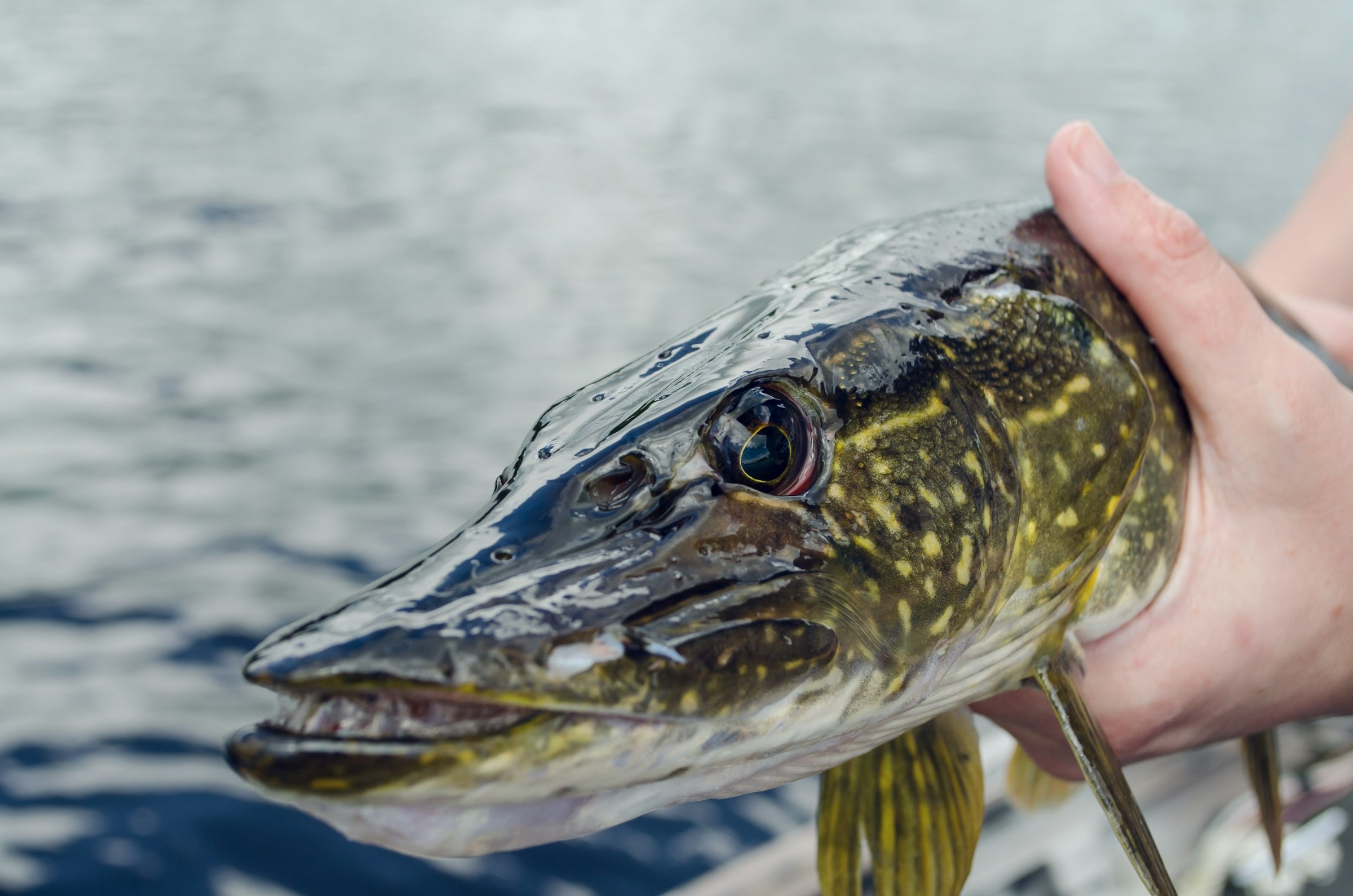
Northern pike are a coldwater species native to the Great Lakes. Photo by Kelly Sikkema (Unsplash).
A 3rd grader caught the fish of a lifetime while ice fishing with his family on Lake Nipissing.
8 year old Kace Amyotte, with the help of his family, reeled in a massive 99-centimetre northern pike using a jigging rod and a minnow. The fish, which is nearly as long as Amyotte is tall, is exceptionally large as male northern pike typically average 28-67-centimetres while females average 48-76-centimetres.
The family shared Amyotte’s catch, having it breaded and fried for dinner with fries and tartar sauce.
Though Lake Nipissing is a well-known fishing destination, the fishing season has had a slow start due to mild temperatures and thin ice. Amyotte’s mother, Robyn, said that despite the late start, the fishing has been better than expected this year.
Check out our story on 7 great Ontario ice fishing spots when planning your next ice fishing adventure, and be sure to read our top ice safety tips to stay safe.
A new home for Parks Canada

There’s something about that Lake Superior. Photo by Austin Park (Unsplash)
The Government of Canada has announced a $37 million contract to construct the Lake Superior National Marine Conservation Area Administration and Visitor Centre. Once completed, it will serve as a hub for managing and educating visitors about the conservation efforts in the park — one of the world’s largest protected freshwater areas. Building the centre will also be a net-zero project, part of Canada’s commitment to a net-zero economy by 2050.
By providing a centralized facility for administration and visitor education, it’s hoped the centre will facilitate greater public awareness of the importance of preserving the Great Lakes and all the life forms that depend on them. One of the main goals of this project is to make such protected areas more accessible to the public. Parks Canada aims to open its doors sometime in 2026.
As the new home for Parks Canada, the centre will also serve as a base for research and monitoring activities, allowing scientists and conservationists to better understand and address environmental challenges facing the Great Lakes watershed, particularly Lake Superior.
On thin ice: Lower-than-average ice cover on the Great Lakes results in higher-than-average ice rescues

North shore of the Saugeen Bruce Peninsula, at Bruce Peninsula National Park. Photo by Scott Parent.
Ice cover on the Great Lakes averaged 6 per cent overall throughout January 2024, sitting at one of the lowest averages ever recorded for that month. Conversely, the average January ice cover over the last 50 years is 20 per cent. The Great Lakes are on track to continue seeing less than the seasonal average throughout the rest of this winter, according to the NOAA’s Great Lakes Environmental Research Laboratory.
Despite the low concentration of ice cover, numerous accounts of ice rescues needed across the Great Lakes so far this year.
On January 19, 2024, a man was rescued near Traverse City, Michigan after he fell through the ice on a frozen lake. A quick-thinking state police officer used the stranded man’s dog to get rescue equipment to him.
On January 22, 2024, the U.S. Coast Guard’s Ninth District Great Lakes station received a report at about 10:20 a.m. that 20 people who had been ice fishing were caught adrift on an ice floe roughly one and a half kilometres long on Lake Erie. Two airboats from nearby Station Marblehead and a Coast Guard helicopter from Air Station Detroit facilitated the rescue with assistance from the Ottawa County sheriff’s office and the Put-In-Bay Fire Department on South Bass Island. No injuries were reported. A shift in the wind direction is thought to have separated the ice from the shore.
On January 28, 2024, the U.S. Coast Guard rescued two people in the Black River in Alcona County, near Lake Huron, who were adrift in the water holding onto a floating piece of ice.
The Ontario Provincial Police have also responded to numerous calls related to ice safety already this year. With frequent mild weather conditions occurring throughout this winter, ice doesn’t have enough time to mature into thick seasonal ice cover with high concentrations that we would typically expect. Open water also generates lake effect snow, which in turn makes existing ice cover less safe.
Safety authorities across the Great Lakes region would like to remind people that no ice is safe ice. Anyone considering venturing out onto the ice for any purpose should do so with an experienced outdoor enthusiast who is familiar with local conditions, water currents and ice safety. Scenarios that necessitate a rescue response place people in unnecessary danger as well as the rescue specialists responding to ice-related emergencies.
Watershed Wednesdays are our weekly roundup of the insightful, intriguing, important and inspiring news from around the Great Lakes-St. Lawrence watershed.



